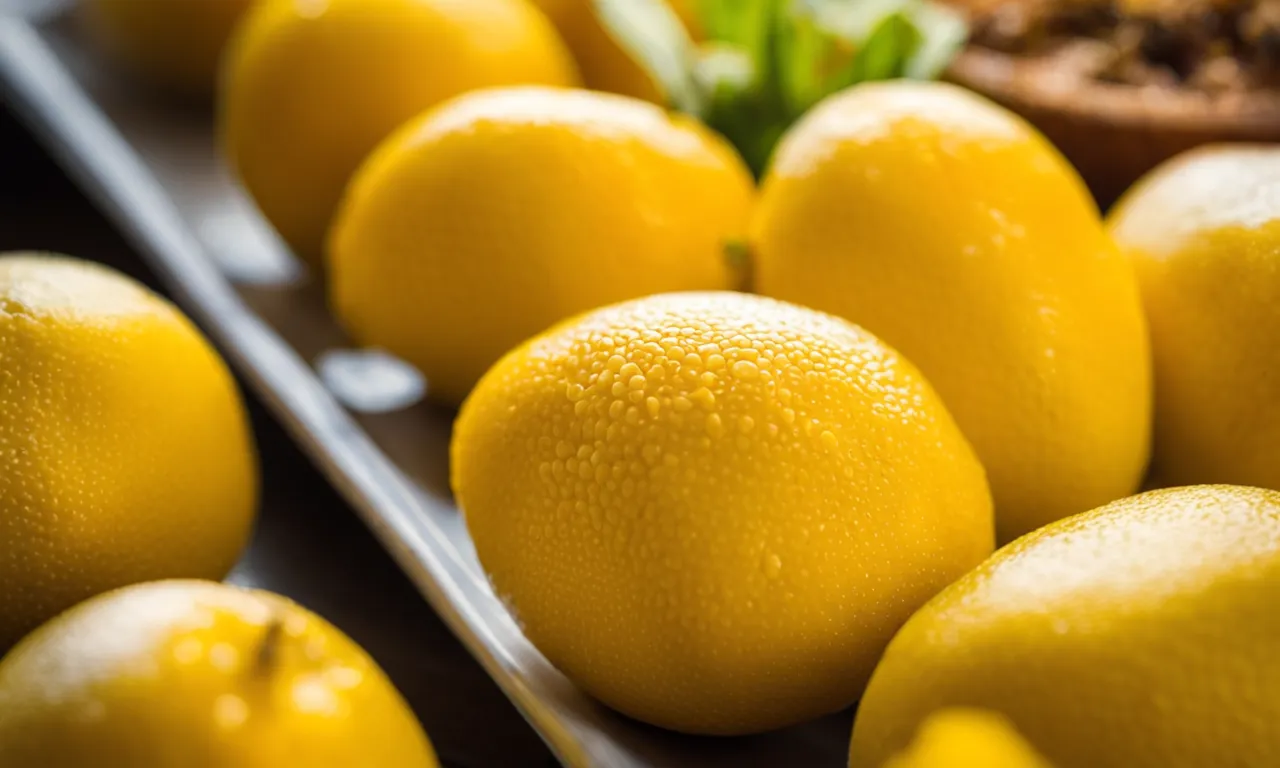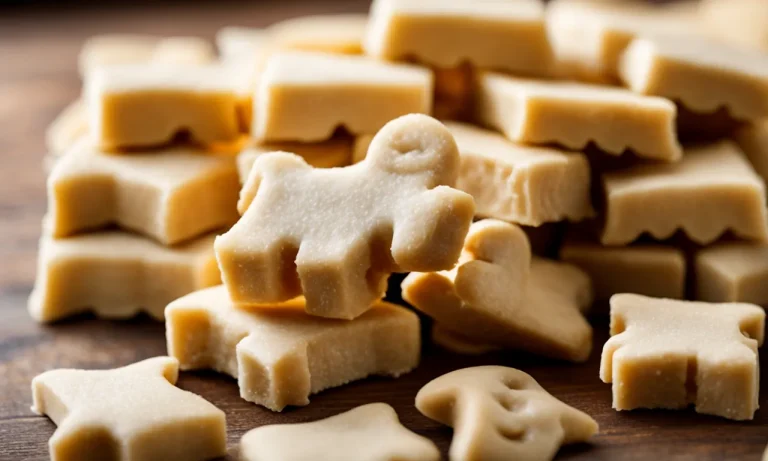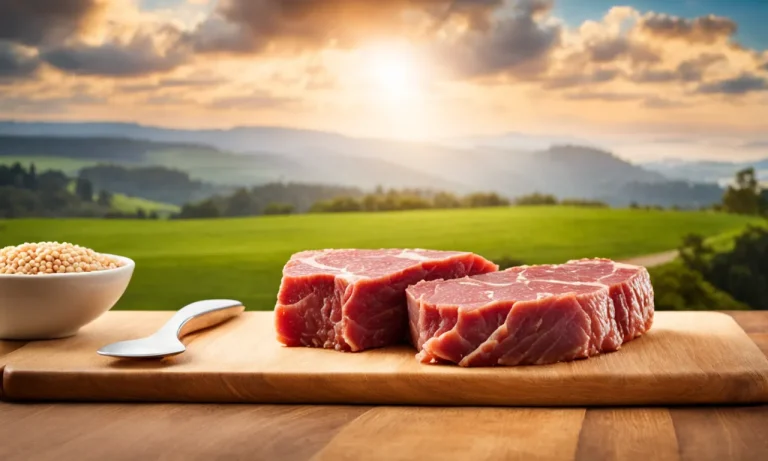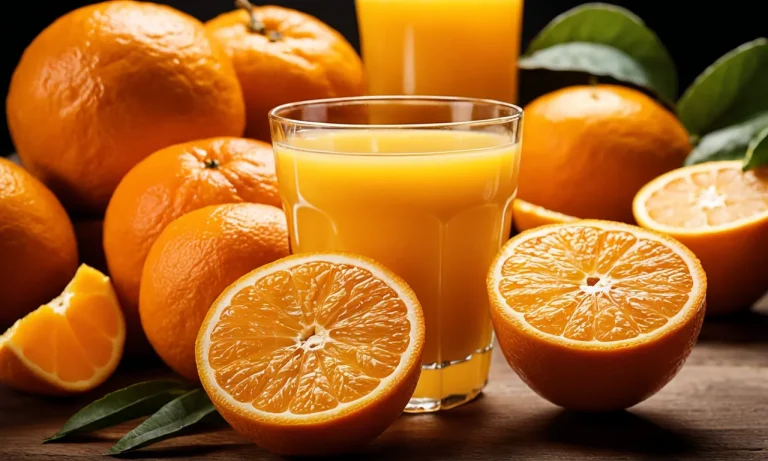Is Yellow 5 Vegan? A Detailed Look At This Common Food Dye
Yellow 5, also known as tartrazine, is one of the most widely used food dyes in products today. If you’ve ever wondered whether this bright dye is vegan-friendly, you’re not alone. In this comprehensive guide, we’ll take an in-depth look at yellow 5 and what makes it vegan or non-vegan.
If you’re short on time, here’s the quick answer: Yes, yellow 5 is generally considered vegan. It is synthetically produced rather than animal-derived, making it acceptable for most vegan diets.
What Is Yellow 5?
Yellow 5, also known as Tartrazine, is a widely used food dye that gives a vibrant yellow color to various food and beverage products. It is one of the most commonly used food colorings in the world and can be found in a wide range of processed foods, including candies, soft drinks, baked goods, and even pet foods.
Chemical Composition
Yellow 5 is a synthetic dye derived from coal tar, a byproduct of the coal industry. Its chemical name is “E102” and its molecular formula is C16H9N4Na3O9S2. It belongs to a class of dyes called azo dyes, which are characterized by a nitrogen-nitrogen double bond.
Production Process
The production process of Yellow 5 involves several steps. First, the coal tar is treated with chemicals to extract the desired color compounds. Then, these compounds are purified and transformed into a powder or granular form.
Finally, the powder is mixed with other food-grade ingredients, such as maltodextrin or dextrose, to create a stable and easily dispersible dye.
Uses in Food
Yellow 5 is primarily used to enhance the visual appeal of food and beverages. Its bright yellow color can make products more visually appealing and attractive to consumers. It is often used in combination with other food dyes to create a broader range of colors.
For example, it is commonly used with Blue 1 to create green shades.
- Yellow 5 can be found in various types of candies, such as gummy bears, fruit chews, and hard candies.
- It is often used in carbonated soft drinks to give them a vibrant yellow color.
- Baked goods, such as cakes, cookies, and pastries, may also contain Yellow 5 to enhance their appearance.
- Some snack foods, such as chips and crackers, may use Yellow 5 as a coloring agent.
It’s important to note that Yellow 5 is not only used in food but also in other products like cosmetics, pharmaceuticals, and textiles.
Is Yellow 5 Vegan?
Yellow 5, also known as Tartrazine, is a commonly used food dye that is found in a wide range of products such as candies, soft drinks, and baked goods. It provides a vibrant yellow color to these products, making them visually appealing to consumers.
However, if you follow a vegan lifestyle, you might be wondering whether Yellow 5 is vegan-friendly or not.
No Animal Ingredients
Yellow 5 is generally considered to be vegan because it does not contain any direct animal ingredients. It is a synthetic dye that is made from petroleum, which means that it does not involve the use of animals in its production.
This is good news for vegans who are concerned about the ethical treatment of animals.
Moreover, Yellow 5 is also free from animal by-products such as gelatin, casein, or carmine, which are commonly used in some food colorings. Therefore, vegans can rest assured that Yellow 5 does not come from animal sources.
Exceptions and Controversies
While Yellow 5 itself is vegan-friendly, there are a few exceptions and controversies surrounding its use. Some argue that the production of Yellow 5 involves the use of animal testing, which goes against the principles of veganism.
It is important to note that the use of animal testing in the food industry is a complex issue, and many companies are actively working towards finding alternative methods to ensure product safety without the use of animals.
As a consumer, you can support cruelty-free brands that prioritize ethical testing practices.
Additionally, Yellow 5 has been linked to potential health concerns, including allergic reactions and hyperactivity in children. While the evidence is not conclusive, it is essential to stay informed and make educated choices about the products you consume.
If you have specific concerns about Yellow 5 or any other food dye, it is always a good idea to reach out to the manufacturer for more information. They can provide you with details about their production methods and any potential animal testing involved.
Health and Safety Concerns
While Yellow 5, also known as tartrazine, is a commonly used food dye, there have been some concerns about its potential health effects. Research has shown that certain individuals may experience side effects or allergic reactions when consuming products containing Yellow 5.
Potential Side Effects
Some studies suggest that Yellow 5 may contribute to hyperactivity and behavioral issues in children. However, more research is needed to establish a definitive link between the food dye and these effects.
Additionally, some individuals may experience digestive issues, such as nausea or diarrhea, after consuming Yellow 5. It’s important to note that these side effects are typically rare and vary from person to person.
Allergy Risks
Yellow 5 has been associated with allergic reactions in some individuals. Symptoms may include itching, hives, swelling, or difficulty breathing. Individuals with a known sensitivity to aspirin may be at a higher risk of developing an allergic reaction to Yellow 5, as both contain salicylates.
If you suspect an allergy to Yellow 5, it’s best to consult with a healthcare professional for further evaluation and guidance.
Banned in Some Countries
While Yellow 5 is considered safe for consumption in many countries, it has been banned or restricted in some regions. For example, in Norway and Austria, Yellow 5 is not permitted for use in food products due to concerns about its potential health effects.
These countries have taken a precautionary approach based on their own assessment of the available scientific evidence.
It’s important to note that regulatory agencies, such as the U.S. Food and Drug Administration (FDA) and the European Food Safety Authority (EFSA), have approved the use of Yellow 5 in food products within certain limits.
They have determined that, when used within these limits, the dye is safe for consumption by the general population.
If you have specific concerns about Yellow 5 or any other food dye, it’s always a good idea to read product labels, consult with healthcare professionals, and make informed decisions based on your individual needs and preferences.
Natural Color Alternatives
While Yellow 5 is a commonly used food dye, many people are looking for natural alternatives. Luckily, there are several options available that can provide vibrant colors without the need for artificial additives. Here are a few natural color alternatives worth considering:
Turmeric
Turmeric, a spice commonly found in Indian cuisine, is known for its vibrant yellow color. It contains a compound called curcumin, which not only adds a beautiful hue to dishes but also offers various health benefits.
Adding a pinch of turmeric can give your food a natural yellow color, making it a great alternative to Yellow 5.
Beet Powder
If you’re looking for a natural red color, beet powder is an excellent option. Made from dehydrated beets, this powder can be used to add a vibrant red hue to a variety of dishes. It’s commonly used in baking, smoothies, and even homemade natural dyes for fabrics.
Paprika
Paprika, made from ground dried peppers, is not only a popular spice but also a natural way to add a reddish-orange color to your food. It is commonly used in savory dishes, soups, and sauces to enhance both flavor and appearance.
Plus, paprika provides a mild heat and smoky flavor to dishes, giving them an extra kick.
Annatto
Annatto, derived from the seeds of the achiote tree, is a natural colorant used in many traditional dishes. It imparts a vibrant orange color and a slightly sweet, nutty flavor. Annatto is commonly used in Latin American and Caribbean cuisines, adding a beautiful touch to dishes like rice, stews, and sauces.
These natural color alternatives not only provide vibrant hues but also offer additional health benefits and unique flavors to your dishes. Experimenting with these natural options can be a fun and creative way to enhance the visual appeal of your meals. So, why not give them a try?
The Verdict on Yellow 5 and Veganism
Yellow 5, also known as Tartrazine, is a commonly used food dye that adds a vibrant yellow color to various food products. However, when it comes to determining whether Yellow 5 is vegan-friendly, the answer is not as straightforward as one might think.
What is Yellow 5?
Yellow 5 is a synthetic dye derived from coal tar. It is widely used in the food industry to enhance the appearance of products such as candies, beverages, baked goods, and even pet food. The vibrant yellow hue provided by Yellow 5 makes it an attractive choice for manufacturers looking to make their products visually appealing.
The Vegan Dilemma
While Yellow 5 itself is not derived from animal sources, the controversy arises from the potential use of animal-derived ingredients in its production process. Yellow 5 is often produced using chemicals that may be derived from animal products.
This raises concerns for those following a vegan lifestyle, as the use of animal-derived ingredients goes against the ethical principles of veganism.
Labeling and Transparency
Unfortunately, there is no standardized labeling requirement for food dyes like Yellow 5, making it challenging for consumers to determine its vegan status. Manufacturers are not obligated to disclose the specific sourcing of the chemicals used in the production of Yellow 5.
As a result, it can be difficult for vegans to make an informed decision about whether or not to consume products containing Yellow 5.
Alternatives to Yellow 5
If you are looking to avoid Yellow 5 altogether, there are alternative natural food colorings available. For example, turmeric, saffron, and annatto seeds can all be used to achieve a similar yellow color in food.
These natural options are generally considered vegan-friendly and can be a great alternative for those seeking to avoid synthetic dyes.
Conclusion
In summary, yellow 5 is generally considered vegan due to its synthetic production process that does not use animal ingredients. However, there are some exceptions and controversies to be aware of regarding its processing and allergenicity.
While vegans can technically eat foods containing yellow 5, many choose to avoid it due to potential health risks. Opting for natural vegan-friendly color alternatives can allow you to reap the aesthetic benefits without the possible side effects.







